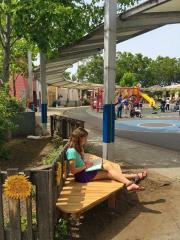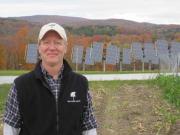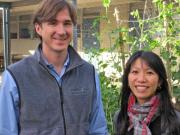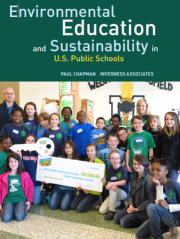Building the Environmental Education Movement: The National Green Schools Network
 In the fall of 2010 just after I retired as principal of Head-Royce School in Oakland, California, I began a journey to help grow greener, more environmentally sustainable schools. That fall I joined the first gathering of the newly-formed Green Schools National Network (GSNN, https://greenschoolsnationalnetwork.org/), a collaboration of public, private and parochial schools from around the country working to promote environmental education and sustainability. The meeting attracted some 800 participants from across the country in four different areas: formal school-based educators, environmental educators from the non-profit world, corporate representatives, and higher education.
In the fall of 2010 just after I retired as principal of Head-Royce School in Oakland, California, I began a journey to help grow greener, more environmentally sustainable schools. That fall I joined the first gathering of the newly-formed Green Schools National Network (GSNN, https://greenschoolsnationalnetwork.org/), a collaboration of public, private and parochial schools from around the country working to promote environmental education and sustainability. The meeting attracted some 800 participants from across the country in four different areas: formal school-based educators, environmental educators from the non-profit world, corporate representatives, and higher education.
The conference created a vision for our nation’s 132,000 schools to reduce their footprint, develop healthy operations, and adopt an ecological curriculum.
Since that first gathering, I have served as a member of the GSNN Advisory Board, and I am proud of the way this organization has grown and had a significant impact on our national effort. We have developed the network by hosting a series of national conferences in the past six years all across the country--in Minneapolis, MN; Boulder, CO; Sacramento, CA; West Palm Beach, FL; Virginia Beach, VA; and Pittsburgh, PA—locations selected to help showcase local and regional initiatives and to build network capacity. For me the annual conferences have provide a forum to share my own research and experience, with talks on the California Environmental Literacy Plan, the Green Ribbon Schools Program, national survey research to map the nature and extent of green schools, and formal-informal collaboration. Hosting a national conference has taken significant effort, so it is good that GSNN has now partnered with the U.S. Green Building Council and the Center for Green Schools to host the annual gathering.
GSNN is now focused more clearly on its vision that “all schools and school districts are green, healthy, and sustainable” and its mission that “connects K-12 teachers, administrators, leaders and professionals with evidence-based resources and tools to maximize financial and natural resources; improve the health and well-being of staff and students; and prepare students with the knowledge and skills for a sustainable future.” The GSNN Green Print offers a clear definition of what it means to be a green school, one focused on: 1. Curriculum that Advances Environmental Literacy and Sustainability, 2. Stewardship and Service Learning, 3. Sustainable Facilities Design and Management, 4. Health and Well Being, and 5. Strong Partnerships and Networks. And with the shift in focus from running the conference to supporting educators, GSNN is now publishing an excellent newsletter.
 While building the GSNN has clearly been a team effort, we are fortunate to have Jenny Seydel as our executive director. With more than 35 year’s experience in education, Jenny has brought unfailing energy, commitment and optimism to ensuring that the Green Schools National Network plays a key role in the country’s move to a more environmentally sustainable future. I am grateful for the opportunity to be part of GSNN and recommend our organization to all those interested in growing greener schools.
While building the GSNN has clearly been a team effort, we are fortunate to have Jenny Seydel as our executive director. With more than 35 year’s experience in education, Jenny has brought unfailing energy, commitment and optimism to ensuring that the Green Schools National Network plays a key role in the country’s move to a more environmentally sustainable future. I am grateful for the opportunity to be part of GSNN and recommend our organization to all those interested in growing greener schools.







